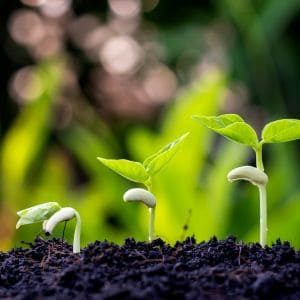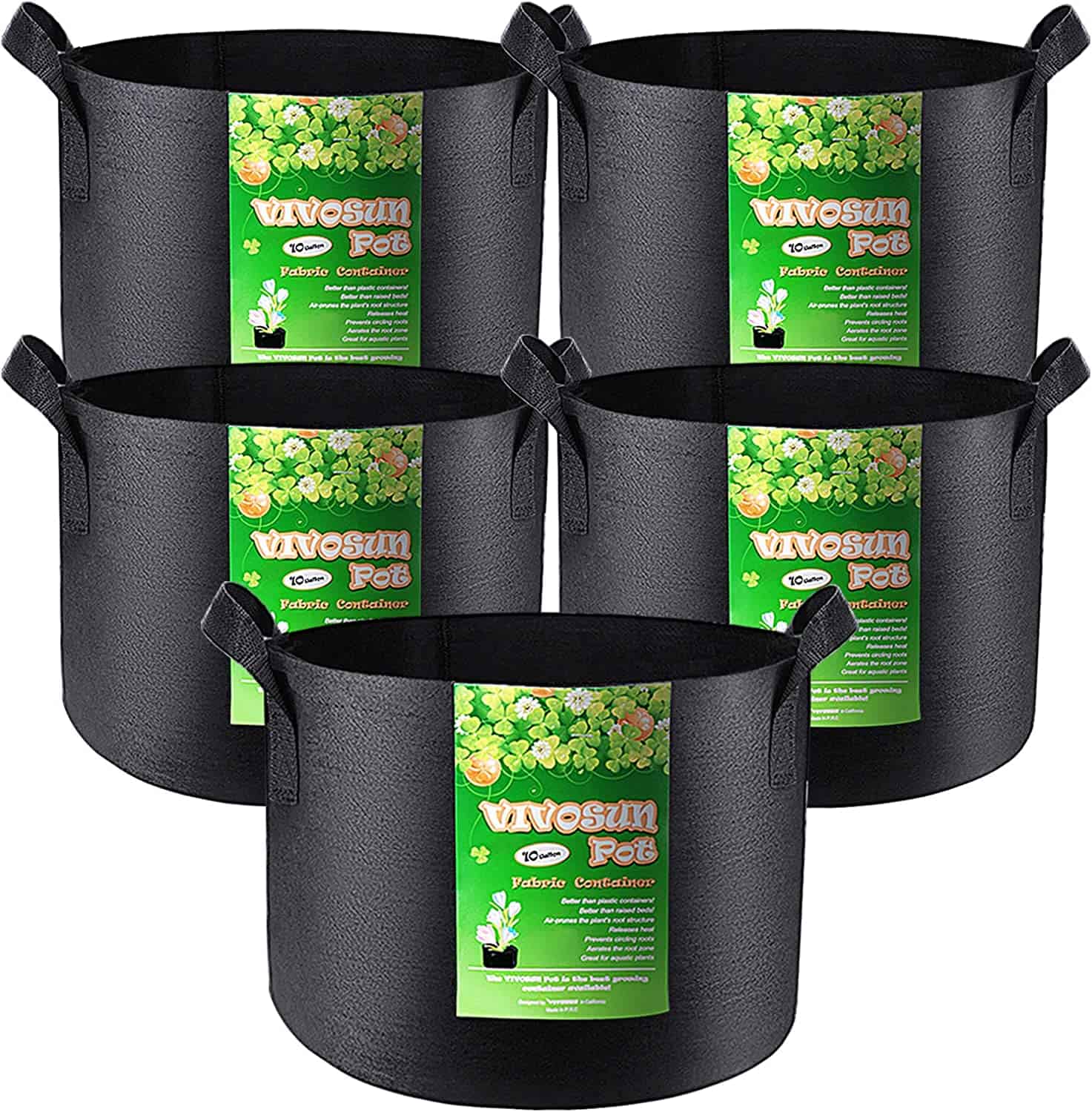When it comes to planting green beans, proper spacing is crucial for a bountiful harvest. Whether you’re growing bush or pole beans, the distance between each seed or plant can affect its growth, yield, and susceptibility to pests and diseases. Getting the spacing right can also help you maximize your garden space and make the most of your resources.
This post may contain affiliate links.
Related Article: How to Freeze Green Beans
Spacing
When it comes to planting green beans, spacing is crucial for optimal growth and yield. In this section, we will cover how far apart to plant green beans, spacing for bush beans, and spacing for pole beans.
How Far Apart to Plant Green Beans
The ideal spacing for green beans depends on whether you are planting bush beans or pole beans. For bush beans, you should space them 2-4 inches apart within the row and space the rows 18-24 inches apart. For pole beans, you should space them 6 inches apart within the row and space the rows 3-4 feet apart.
Related Article: Best Green Beans to Grow: Tips for a Bountiful Harvest
Burpee Three Color Blend Bush Bean Seeds 2 ounces of seed Kentucky Wonder Pole Bean Seed for Planting
Kentucky Wonder Pole Bean Seed for Planting
Spacing for Bush Beans
Bush beans are a great option for small gardens or containers. When planting bush beans, you can use the intensive gardening method to maximize your yield. In this method, you can plant your bush beans in wide rows that are 16-18 inches wide and 16 inches apart. Within the row, space your bush beans 3-4 inches apart. This method allows you to grow more plants in a smaller space, but it does require more maintenance, as you will need to weed and water more frequently.
Related Article: Pickled Green Beans (Dilly Beans)
Spacing for Pole Beans
Pole beans are a great option for larger gardens or for gardeners who want to maximize their yield. When planting pole beans, you will need to provide them with support, such as a trellis or pole. You should space your pole beans 6 inches apart within the row and space the rows 3-4 feet apart. This spacing will allow your pole beans to climb up the support and produce a high yield.
Planting
When it comes to planting green beans, there are a few things you should consider. In this section, we will cover when to plant, how to plant, planting in containers, and transplanting.
Related Article: Canning Green Beans
When to Plant Green Beans
Green beans are a warm-weather crop and should be planted after the last spring frost when the soil temperature reaches at least 48°F (9°C). The ideal soil temperature for planting is around 55°F (13°C), and the temperature should warm to 77°F (25°C) once the plants reach the emergence stage. Planting too early can result in slow germination and poor growth.

Planting Green Beans in Containers
Green beans can be grown in containers, but you need to ensure that the container is large enough and has good drainage. Use a high-quality potting mix and sow the seeds 1 inch deep and 2 to 3 inches apart. Keep the soil moist but not waterlogged, and place the container in full sun.
5-Pack 10 Gallon Plant Grow Bags, Heavy Duty Thickened Nonwoven Fabric Pots with Handles
Transplanting Green Beans
Green beans can be transplanted, but it is best to sow the seeds directly in the garden. If you do choose to transplant, make sure to do it carefully to avoid damaging the shallow roots. Transplant when the seedlings are about 3 inches tall and have at least two sets of true leaves.
Related Article: Green Beans with Bacon and Onions
When planting green beans, it is important to thin them out if they are too close together. Thin bush beans to about 4 inches apart, and pole beans to about 6 inches apart. This will help ensure that the plants have enough space to grow and produce a good harvest.
Support
When it comes to growing green beans, providing support is essential to ensure they grow healthy and strong. In this section, we will cover how to support green beans and the different types of support you can use.
Related Article: How to Grow Green Beans in Pots: A Beginner’s Guide
How to Support Green Beans
The most common way to support green beans is by using a trellis. A trellis is a structure made of wood or metal that allows the beans to climb up and grow vertically. Here’s how to create a trellis for your green beans:
- Choose a location: The first step is to choose a location where you want to grow your green beans. Make sure the location gets plenty of sunlight and has well-draining soil.
- Build the trellis: Next, build the trellis. You can use wooden stakes or metal poles to create a frame. Then, attach string or wire mesh horizontally to create a ladder-like structure.
- Plant the beans: Once the trellis is in place, plant the beans at the base of the trellis. Make sure to space them according to the instructions provided on the seed packet.
- Train the vines: As the beans grow, gently guide the vines towards the trellis. You can use twist ties or garden twine to tie the vines to the trellis.

Types of Support for Green Beans
There are several types of support structures you can use for green beans. Here are some of the most popular options:
- Teepee: A teepee is a simple structure made of wooden poles or bamboo stakes. To create a teepee, place the poles in a circle and tie them together at the top. Then, plant the beans around the base of the teepee and train them to climb up the poles.
- Fence: If you have a fence in your garden, you can use it as a support structure for your green beans. Simply plant the beans at the base of the fence and train them to climb up the fence.
- Vines: If you have a pergola or arbor in your garden, you can use the vines to support your green beans. Plant the beans at the base of the structure and train them to climb up the vines.
Providing support for your green beans is crucial to ensure they grow healthy and strong. By using a trellis, teepee, fence, or vines, you can create a structure that allows the beans to climb up and grow vertically. Make sure to choose the right support structure for your garden and follow the instructions provided on the seed packet for spacing and planting.
Maintenance
Green beans are a relatively low maintenance crop, but they still require some care to thrive. Here are some tips on how to keep your green beans healthy and productive.
Watering Green Beans
Green beans require consistent moisture to produce a good crop. Water your plants deeply once or twice a week, depending on rainfall and soil moisture levels. Avoid getting water on the leaves, as this can promote disease. You can use a drip irrigation system or soaker hose to deliver water directly to the roots.
Fertilizing Green Beans
Green beans are light feeders, so they don’t require a lot of fertilizer. However, adding some compost or well-rotted manure to the soil before planting can help provide nutrients throughout the growing season. You can also side-dress with a balanced fertilizer once or twice during the growing season.
Mulching Green Beans
Mulching can help conserve soil moisture, suppress weeds, and keep the soil cool. Apply a layer of organic mulch, such as straw or leaves, around the base of your plants. Make sure to keep the mulch a few inches away from the stem to prevent rot.
Weeding Green Beans
Weeds can compete with your green beans for water and nutrients, so it’s important to keep them under control. Hand-pull weeds or use a hoe to remove them when they’re small. Mulching can also help suppress weed growth.
Pest and Disease Control for Green Beans
Green beans can be susceptible to a variety of pests and diseases, including aphids, cutworms, powdery mildew, and anthracnose. To prevent these problems, practice good garden hygiene by removing plant debris and rotating crops.
You can also use companion planting to help repel pests, such as planting marigolds or nasturtiums near your beans. If you do have a pest or disease problem, try using organic methods of control, such as spraying with insecticidal soap or neem oil.
Overall, green beans are a relatively easy crop to grow, but they do require some attention to keep them healthy and productive. By following these tips for watering, fertilizing, mulching, weeding, and pest and disease control, you can enjoy a bountiful harvest of delicious green beans.
Harvesting
When to Harvest Green Beans
Knowing when to harvest your green beans is essential to ensure that you get the best quality fruit. You can harvest green beans when the pods are still young and tender. The ideal time to harvest green beans is when the pods are about 4 to 6 inches long and the seeds inside are still small and undeveloped. If you wait too long to harvest, the seeds inside the pods will become large and tough, and the pods will become stringy and tough.
How to Harvest Green Beans
Harvesting green beans is easy and straightforward. Simply grasp the stem of the bean pod between your thumb and forefinger and gently pull it off the plant. You can also use a pair of scissors or garden shears to cut the stem of the bean pod. Be careful not to damage the plant or other pods when harvesting.
Storing Green Beans
To store green beans, first, rinse them in cold water and then pat them dry with a towel. Next, store the beans in a plastic bag or airtight container in the refrigerator. Green beans can last up to a week in the refrigerator. If you want to store green beans for a longer period, you can blanch them and then freeze them. To blanch green beans, first, bring a pot of water to a boil, then add the beans and cook for 2-3 minutes. After blanching, transfer the beans to a bowl of ice water to stop the cooking process. Dry the beans and then store them in a freezer bag or container.
Remember to always use quality seed when growing green beans in your home garden. Also, keep in mind that the acidic value of your medium can affect the growth and quality of your green beans. Experiment with different varieties of green beans to find the ones that grow best in your garden.
Follow my gardening board on Pinterest.
In case you missed it:





